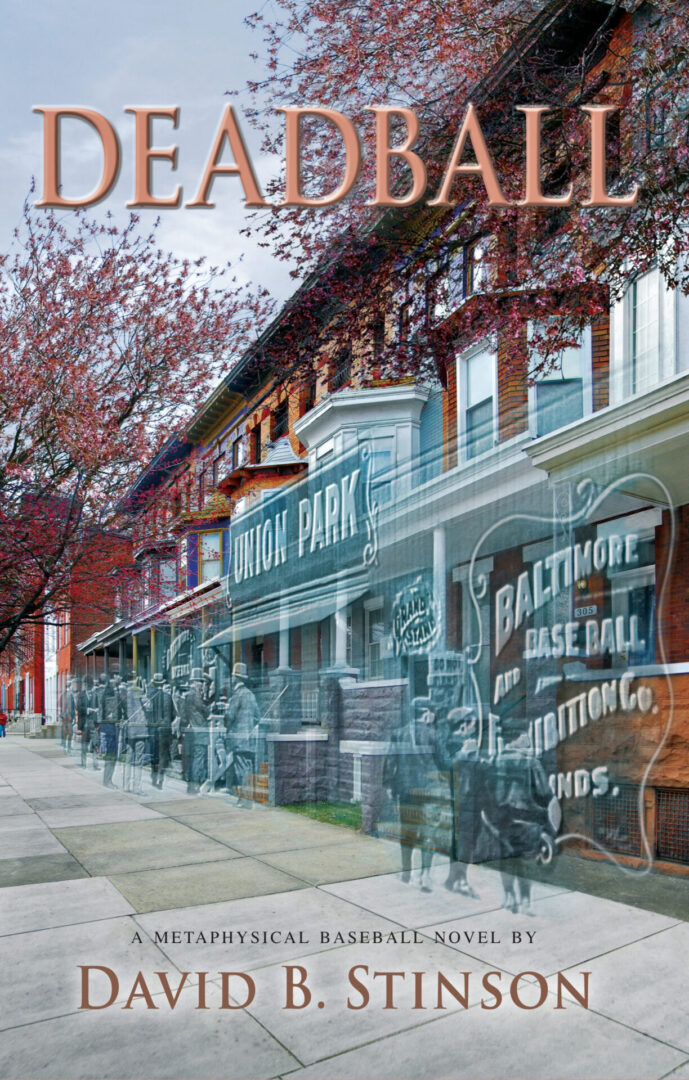The southwest corner of East 29th Street and Greenmount Avenue in Baltimore, Maryland, is the site of two former major league baseball fields.
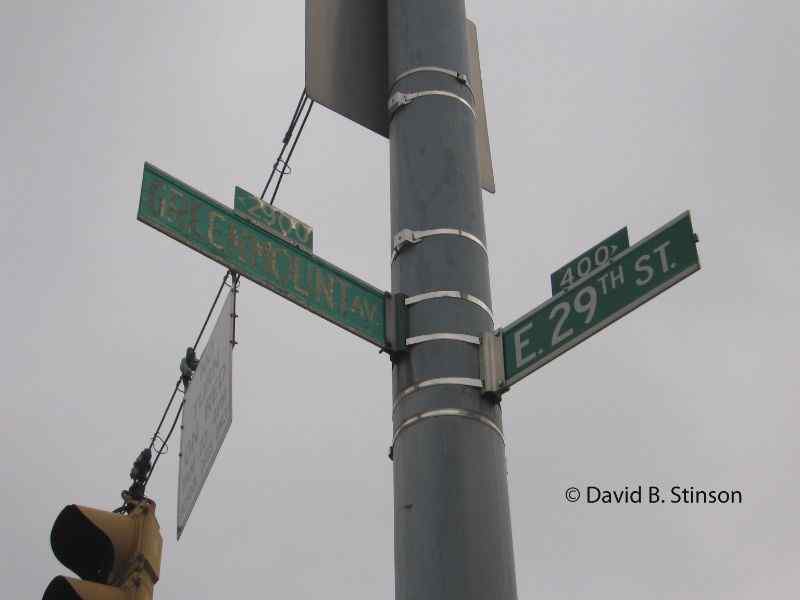
From 1890-1891, the site held Oriole Park (II) (the second Oriole Park according to Phillip Lowry and his excellent book Green Cathedrals) and was home to the American Association Baltimore Orioles.
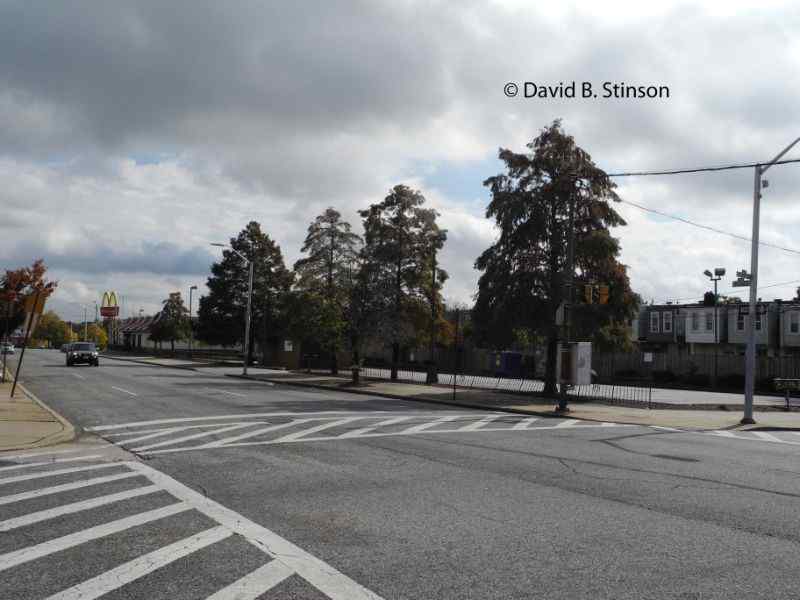
A second ballpark – American League Park – was constructed on that site (also known as Oriole Park IV) (the fourth, according to Mr. Lowry) and was home to the American League Baltimore Orioles for the 1901 and 1902 seasons.
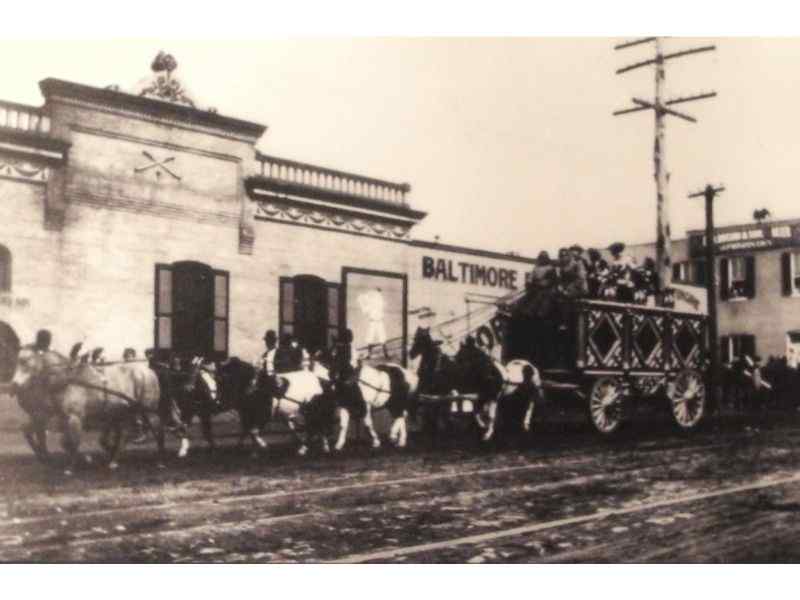
American League Park should not be confused with Terrapin Park, which was located across 29th Street from American League Park at the northwest corner of East 29th Street and Greenmount. Terrapin Park was home to the Federal League Baltimore Terrapins in 1914 and 1915, the International League Orioles from 1916 to 1944, and the Negro American League Baltimore Elite Giants from 1938 to 1944 (see Terrapin Park/Oriole Park). The 1914 map below (with thanks to Bernard McKenna) shows the locations of both parks.
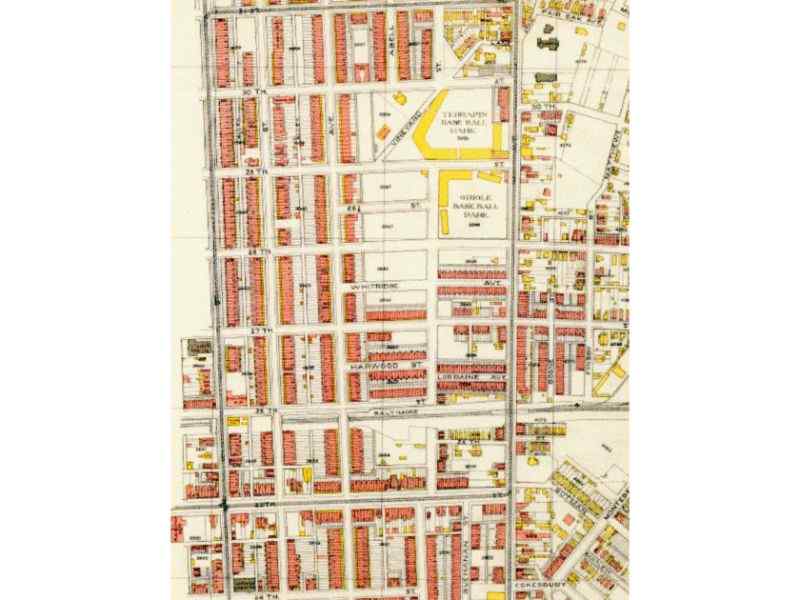
In 1902, the American League took control/ownership of Baltimore’s American League franchise and it subsequently was sold to New York interests and became the New York Highlanders, and later the New York Yankees. Some argue that this means the current New York Yankees were never formerly the “original” American League Baltimore Orioles. This distinction became important to the New York club (and some fans) as the Yankees were approaching 10,000 franchise wins (which they achieved in 2015). The Yankees had no interest in including Baltimore’s 1901 and 1902 season wins (or losses) as part of their illustrious record. However, there is no doubt that the New York Yankees franchise had its origin in Baltimore, even with the intervening ownership of the franchise by the American League.
The Eastern League Baltimore Orioles (the league was renamed the International League in 1911) took over American League Park for the 1903 season.
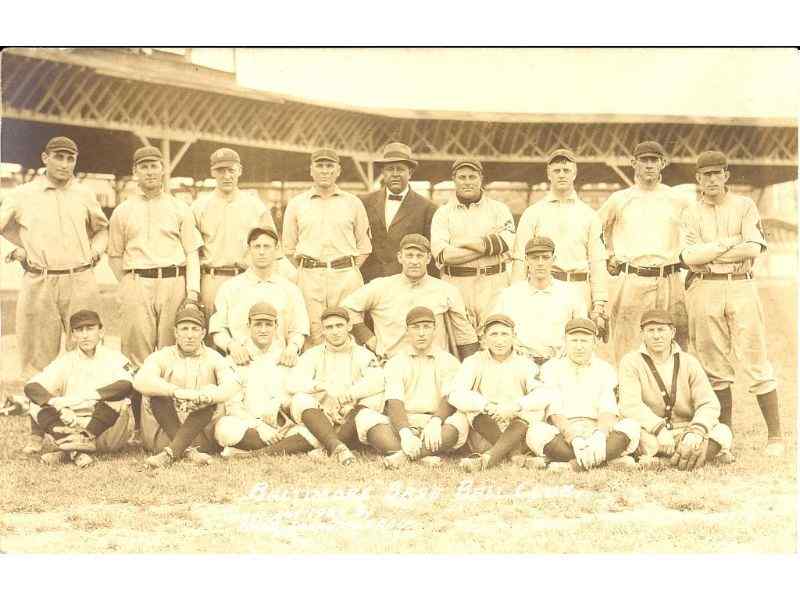
The ballpark was also where Babe Ruth, playing for the International League Orioles in 1914, played for Baltimore during his one year of professional minor league baseball.
A Sanborn Insurance Map shows the location of much of the ballpark in 1901.
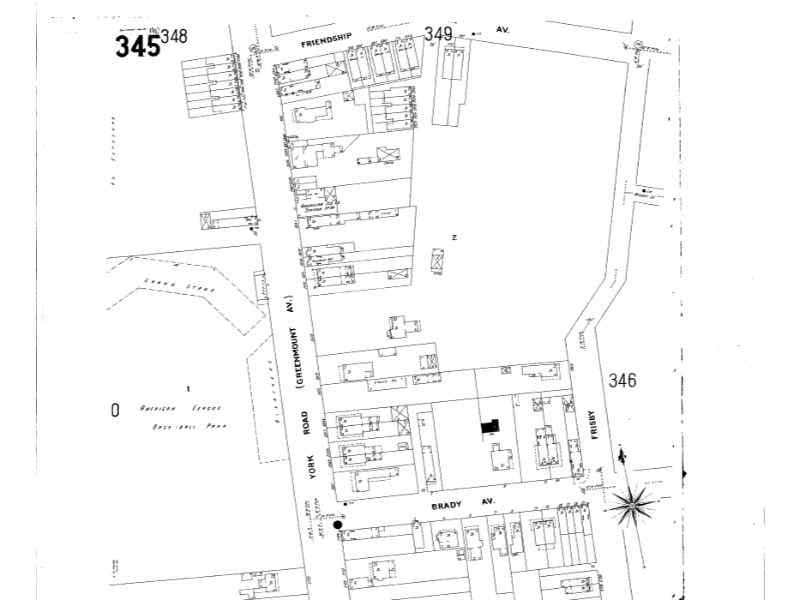
A McDonald’s now stands at the site, its restaurant and drive through covering the left field corner and the parking lot behind it covering much of the infield.
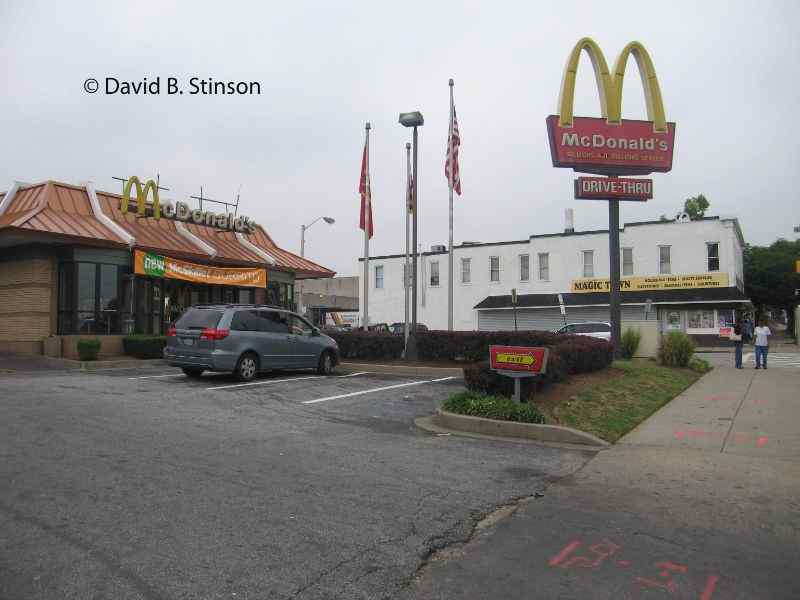
Home plate was once located in the southeast corner of East 29th Street and Barclay. No, that is not a young Babe Ruth standing in the approximate location of home plate, it is actually SABR Bob Davids Chapter President Bruce Brown.
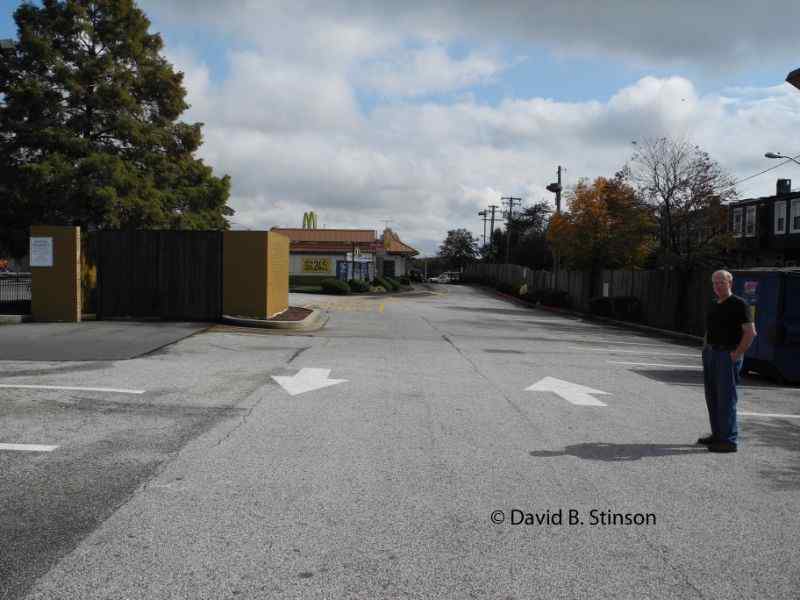
The first-base line ran parallel to Barclay.
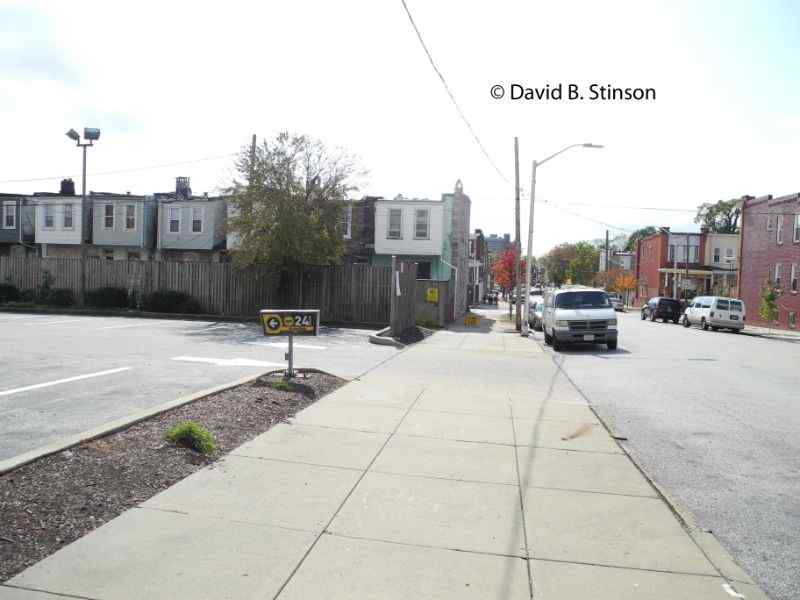
The third-base line ran parallel to East 29th Street.
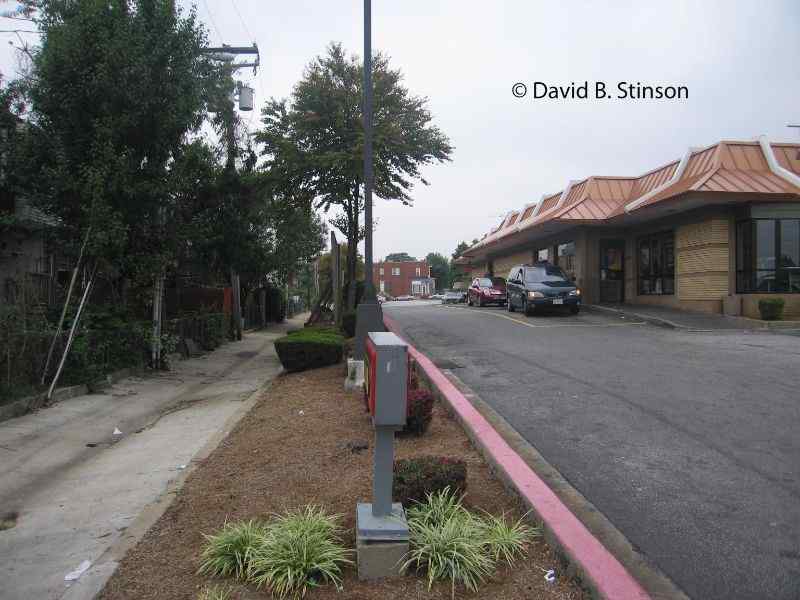
Two-story row houses fronting both sides of Llchester Road, constructed after the demise of American League Park, cover the remaining portion of the ballpark site.
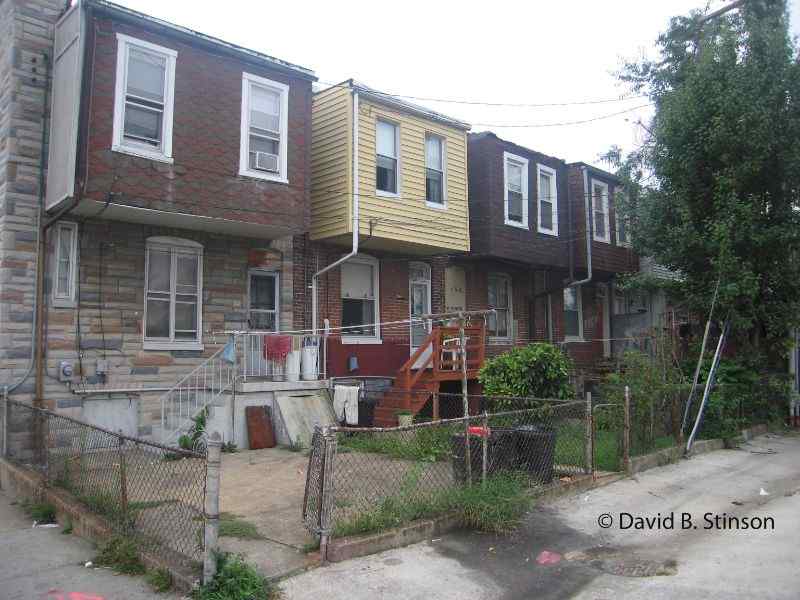
The perimeter of the park ran from East 29th Street to the north, to Greenmount Avenue to the east, to East 28th Street to the South and to Barclay Street to the west.
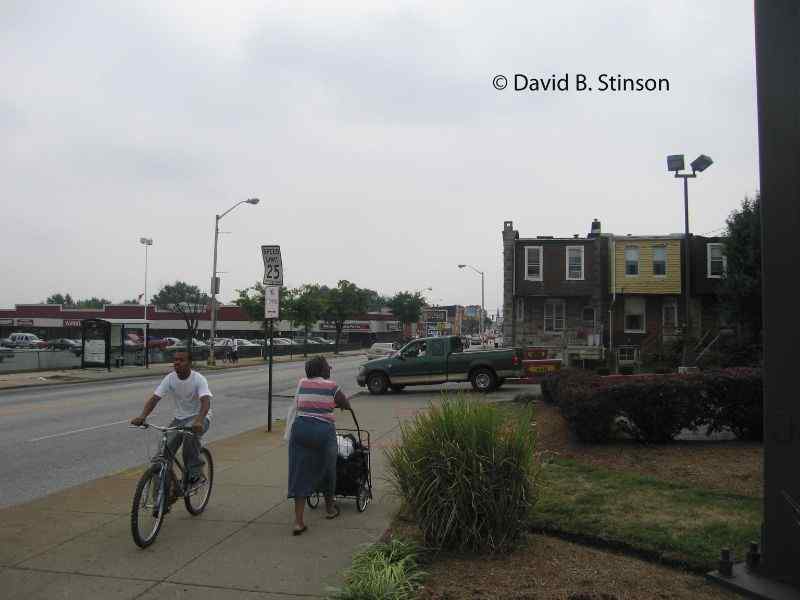
Six blocks south of the former ballpark site is St. Ann’s Catholic Church (at the corner of Greenmount Avenue and East 22nd Street) which is where former Orioles John McGraw married his second wife, the former Blanche Sindall. The church’s Gothic spiral is visible down Greenmount.

The areas surrounding the Harwood section of Baltimore includes several former ballpark sites. To the northwest is the former site of Memorial Stadium, home of the American League Baltimore Orioles from 1954 to 1991. It is located less than a mile from old American League Park – four blocks north on Greenmount and five blocks east on 33rd Street. Four blocks to the south is the former site of Union Park (East 25th and Barclay), home of the National League Baltimore Orioles of the 1890s (see Union Park). If you consider yourself a true fan of Baltimore baseball, be sure to make the effort and visit these former sites. You can even stop for a hamburger and fries and consume them while siting in a booth located in American League Park’s former left field.
